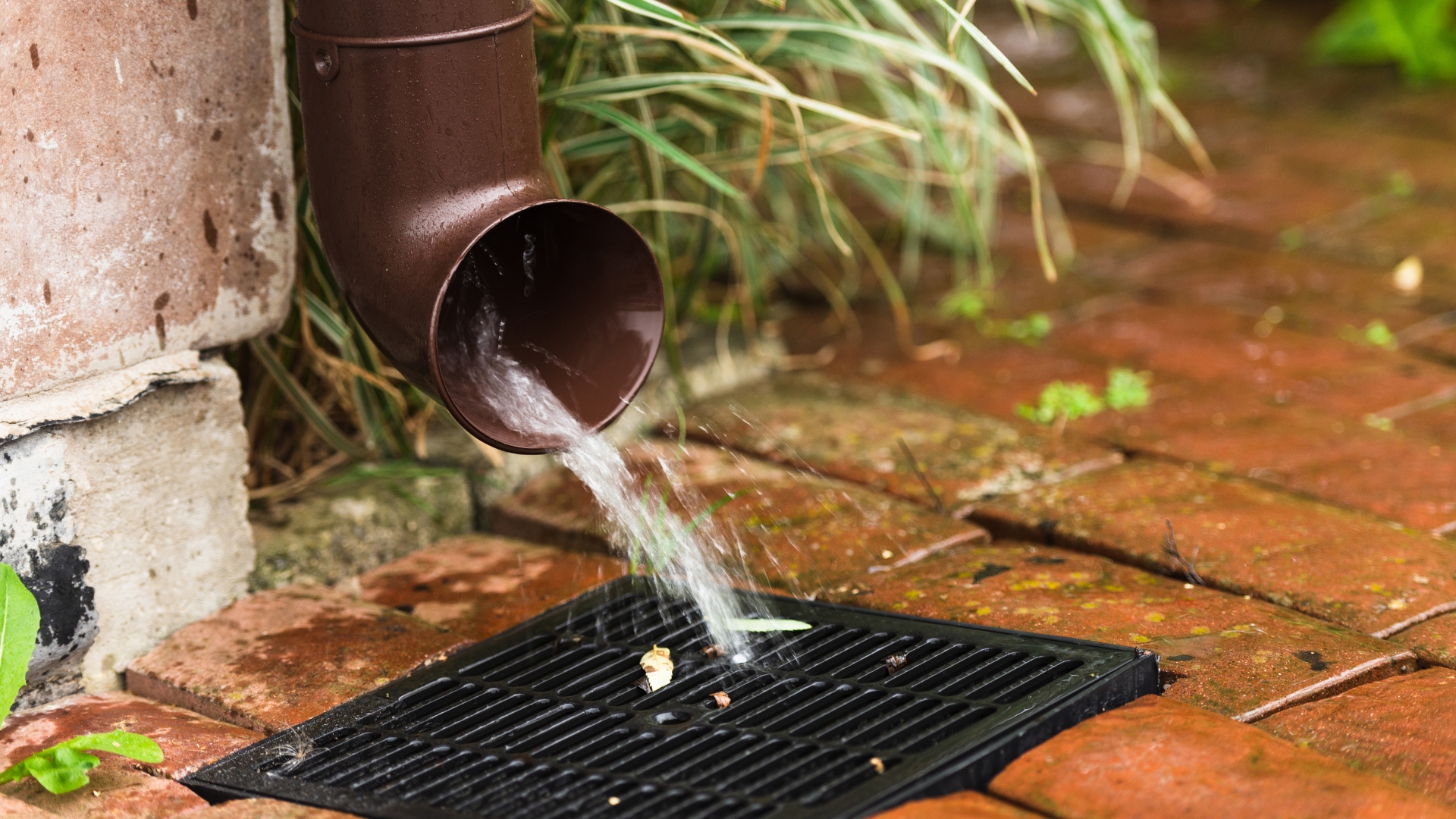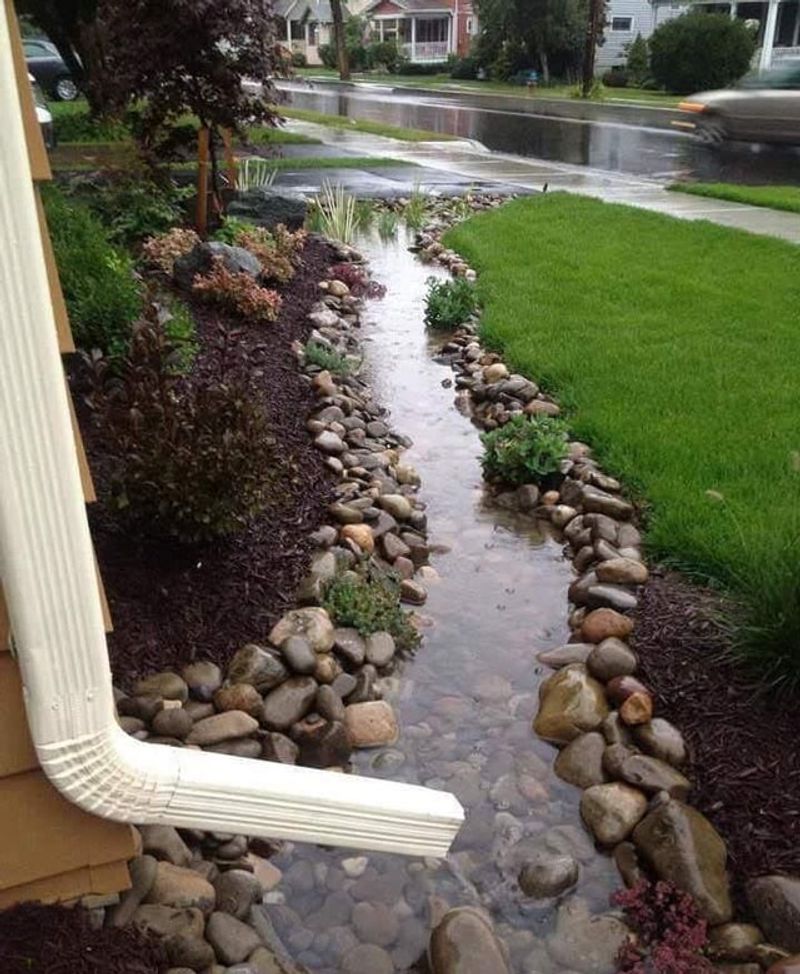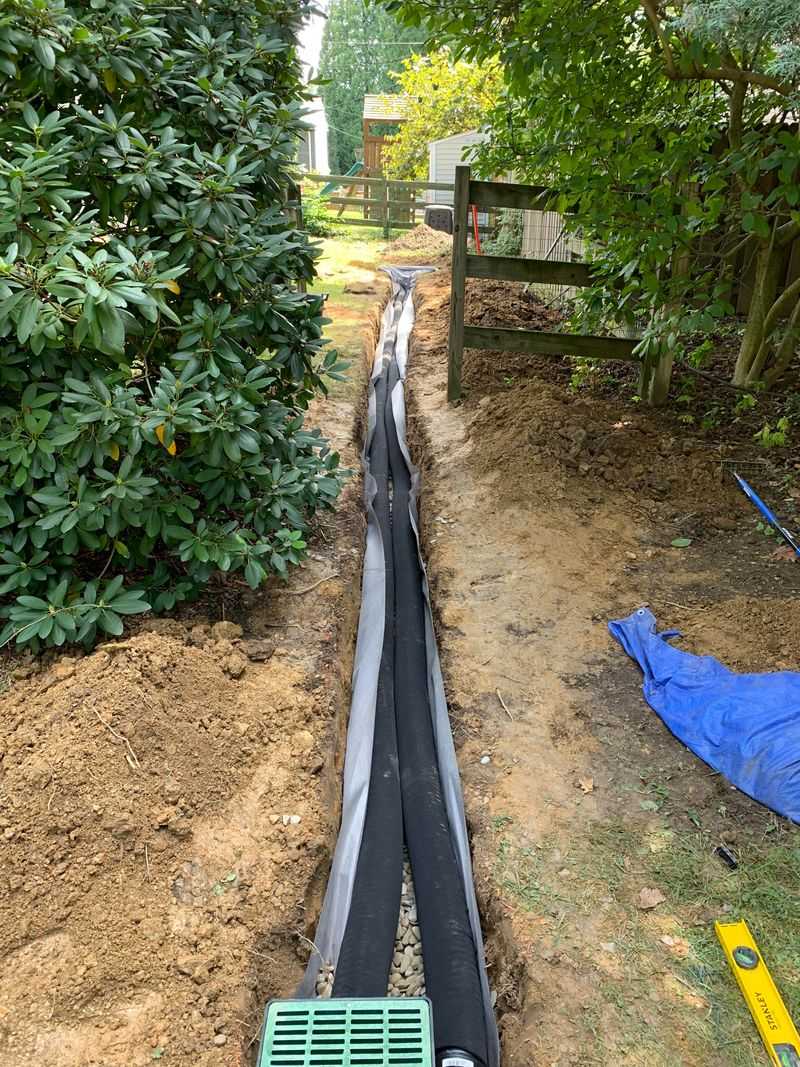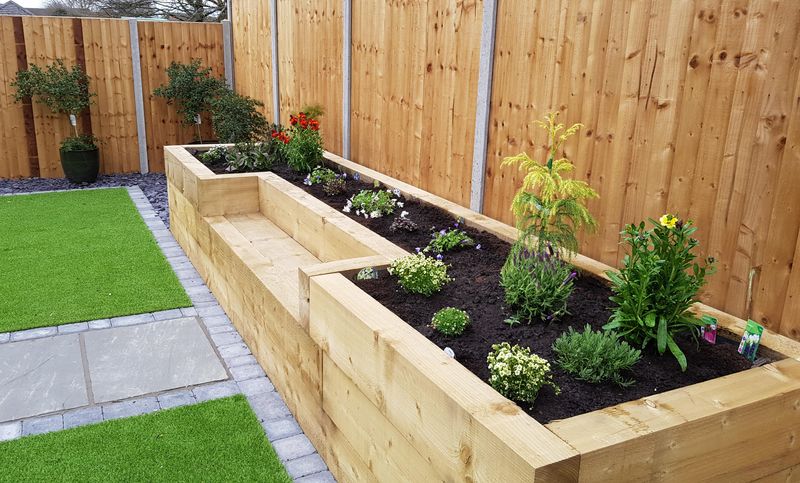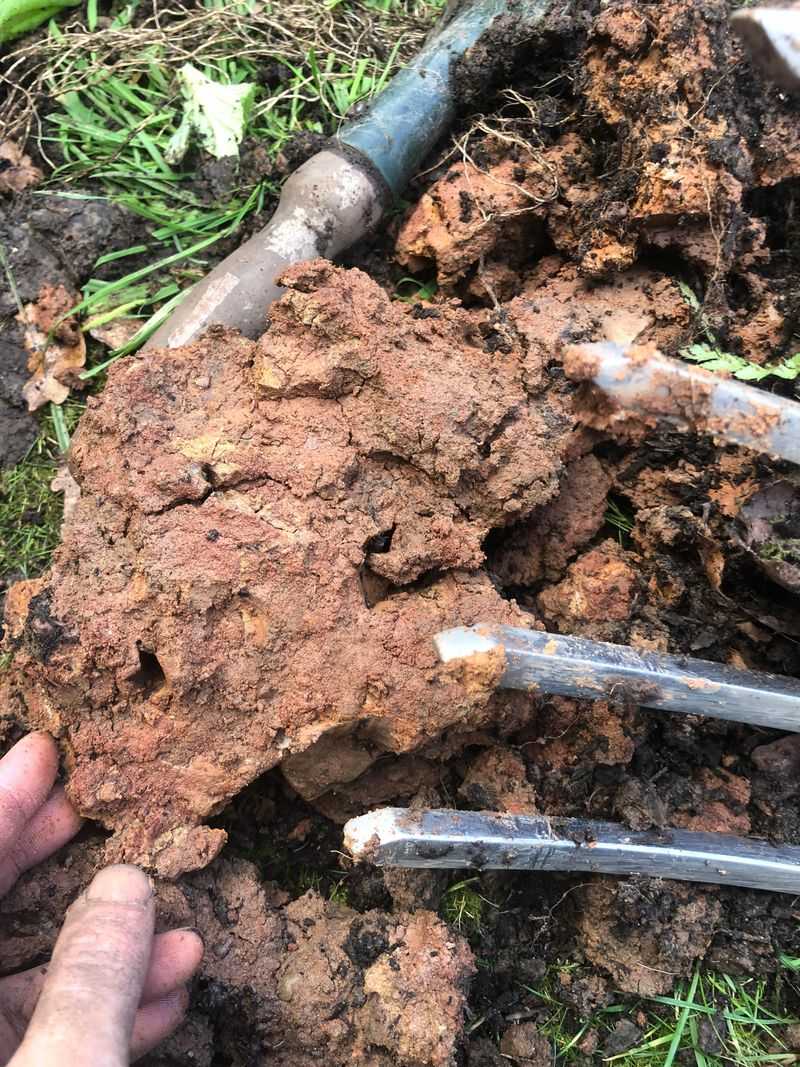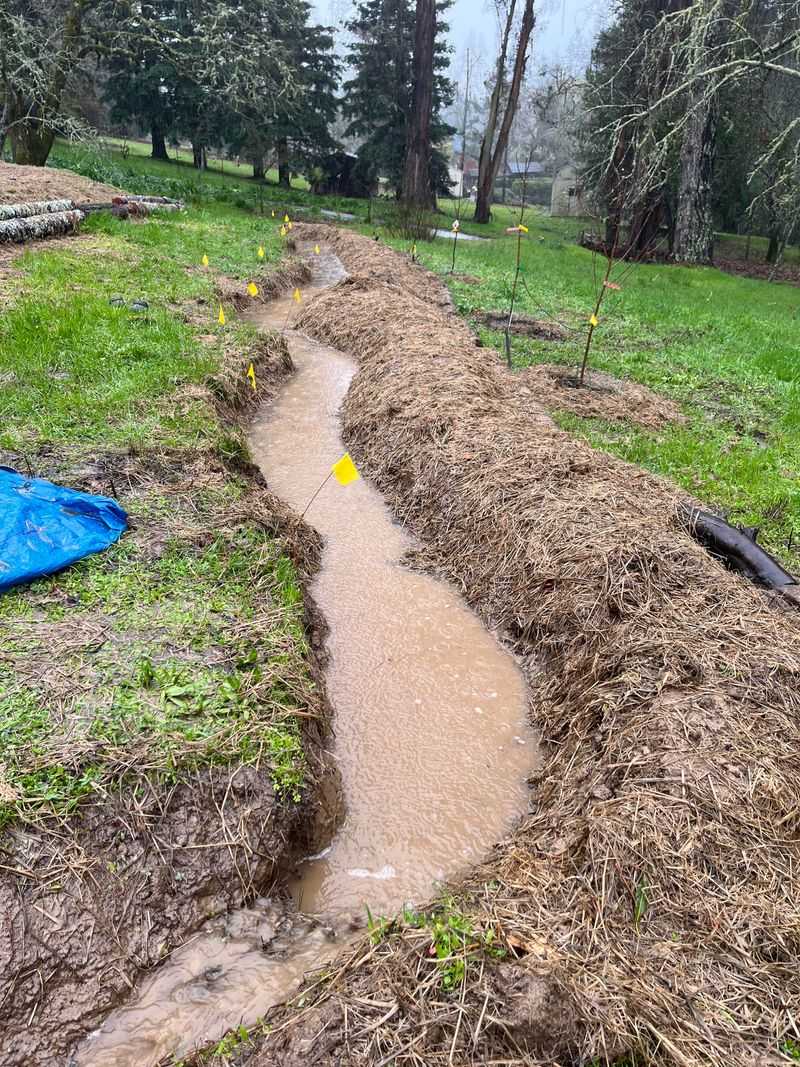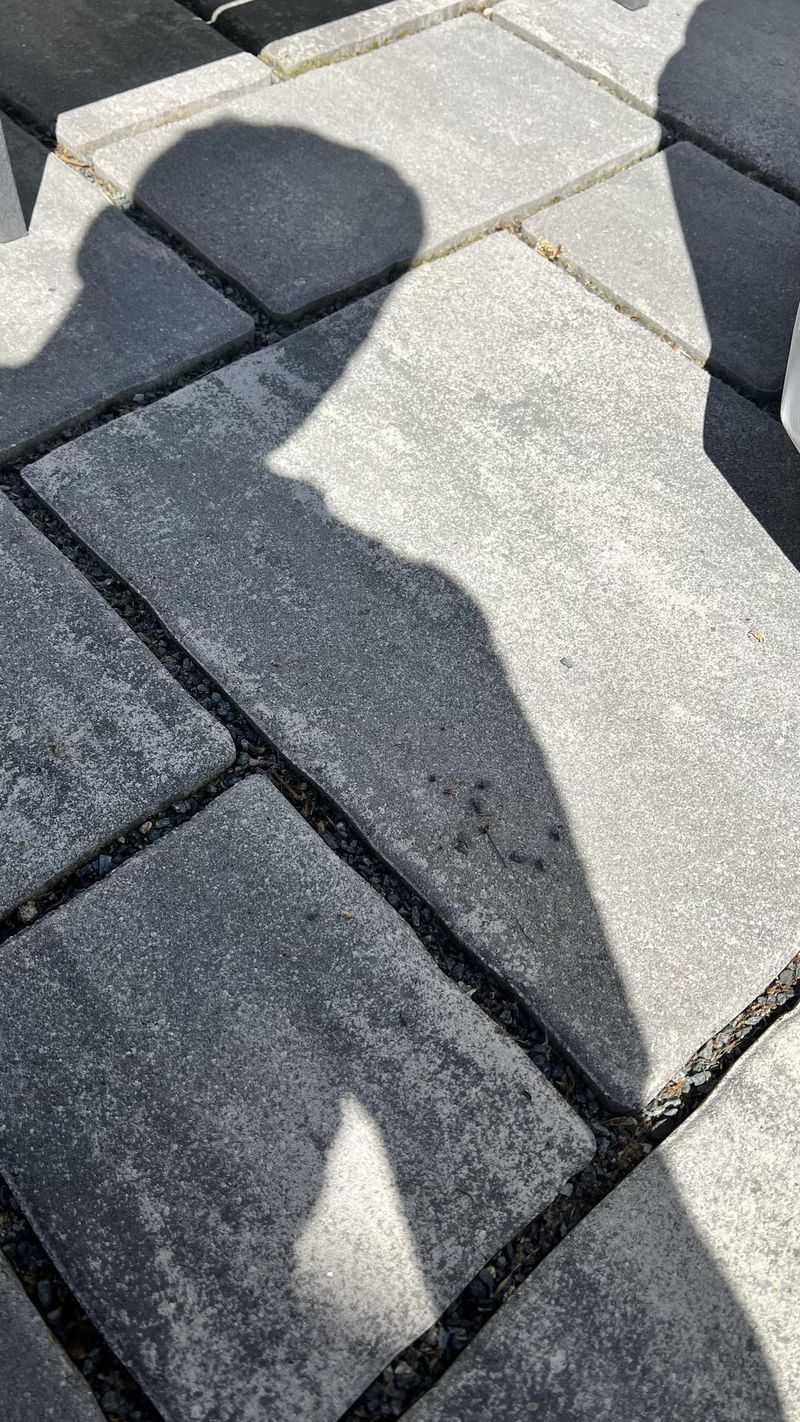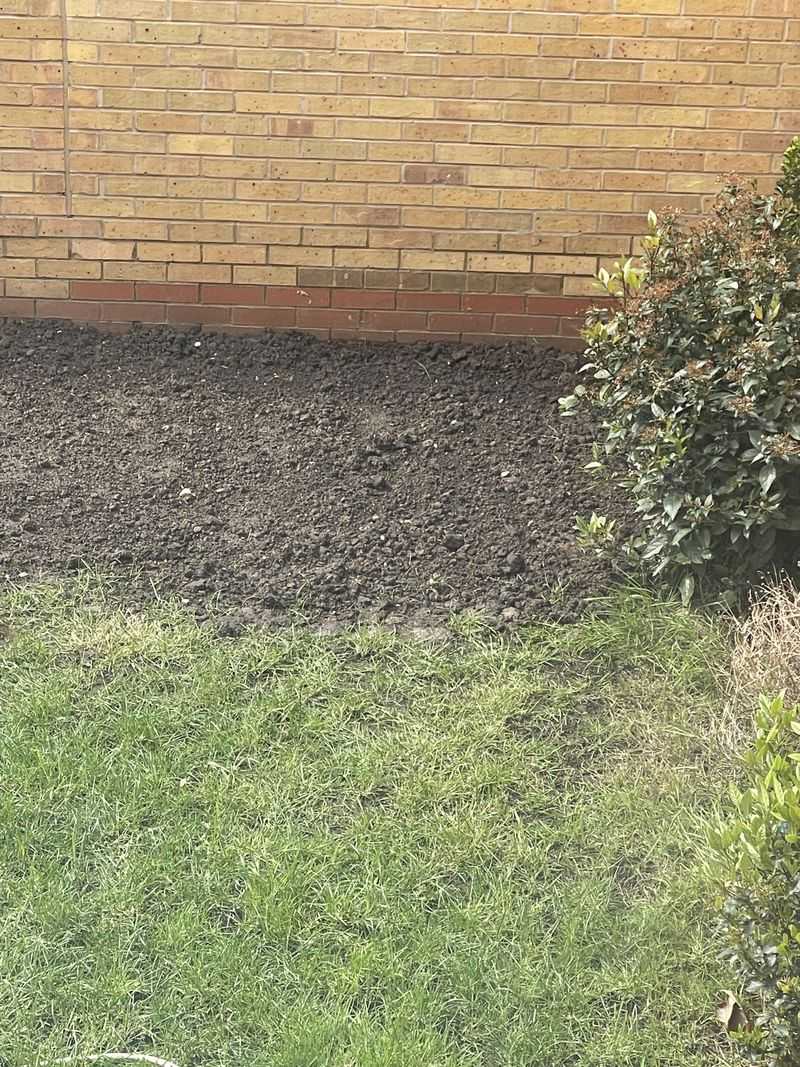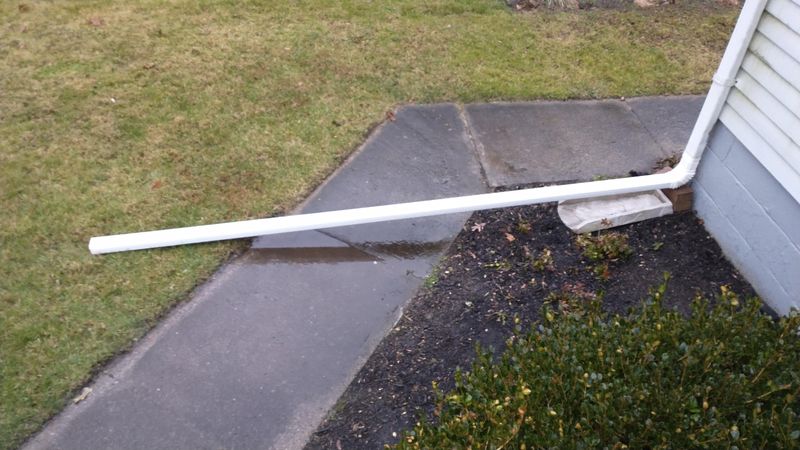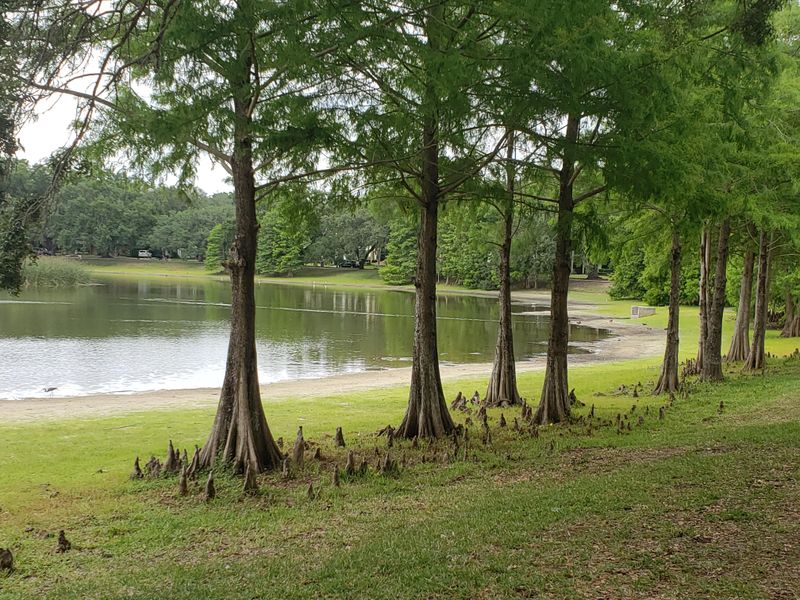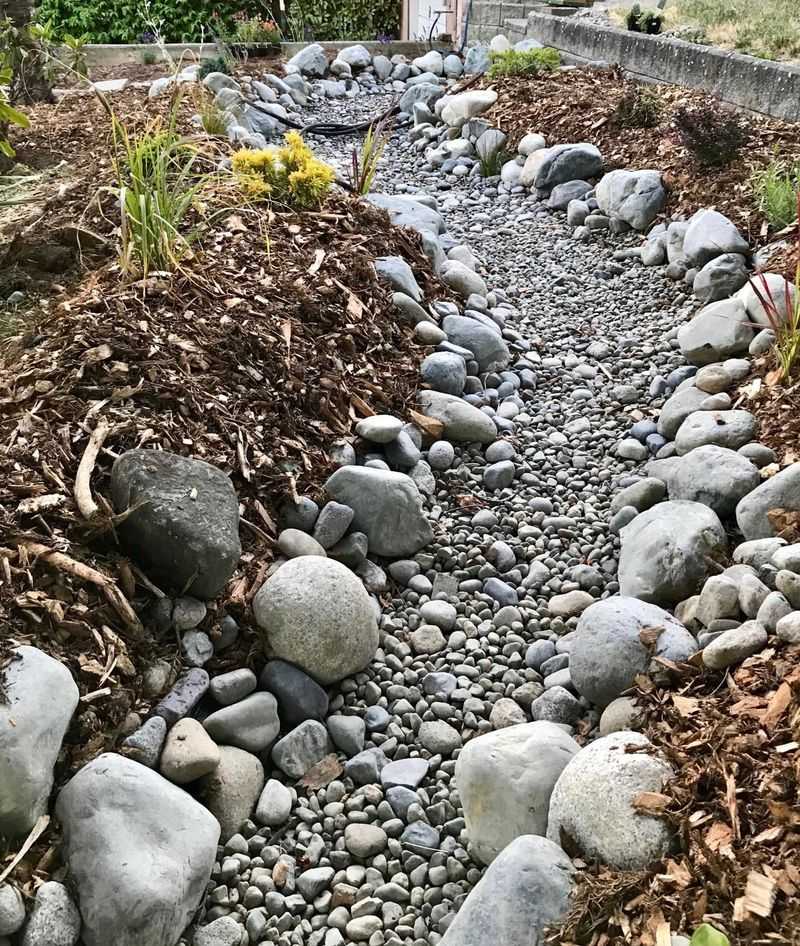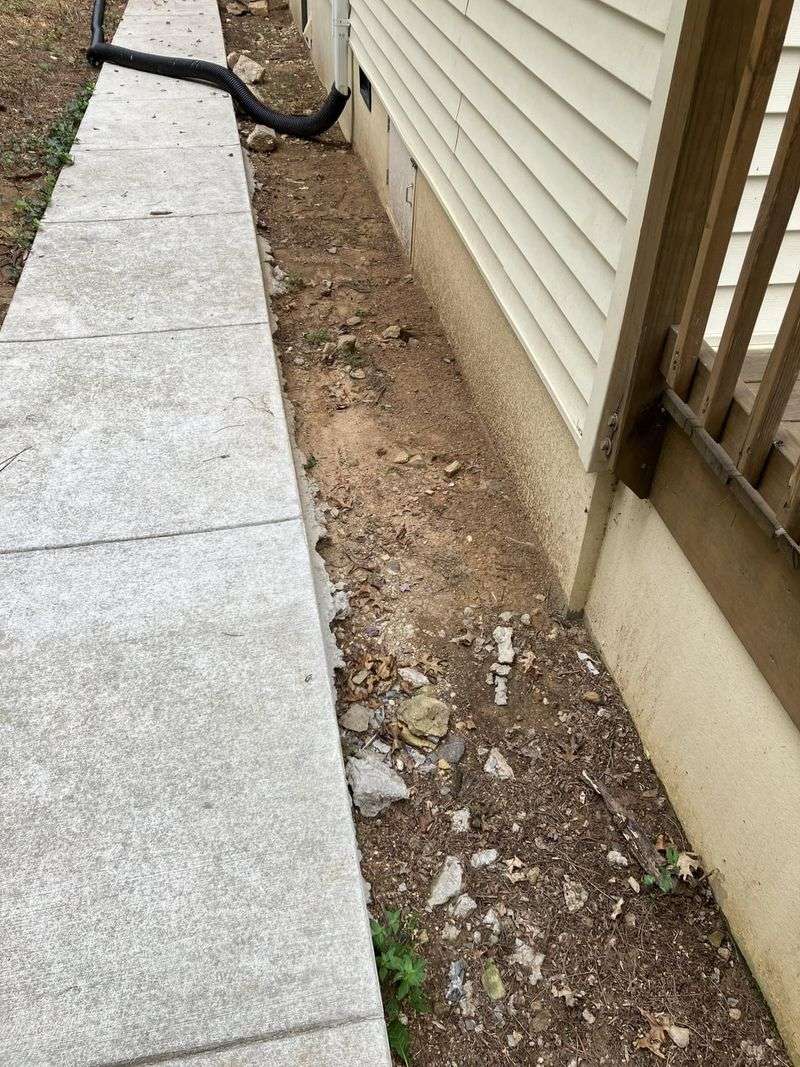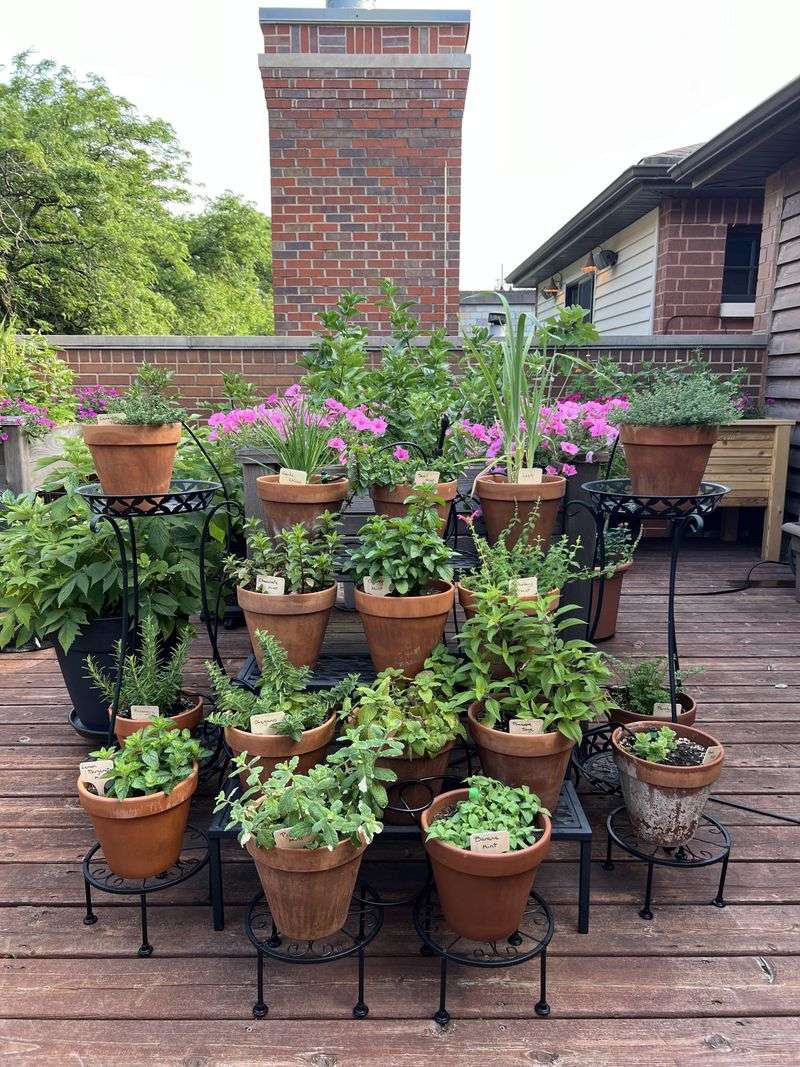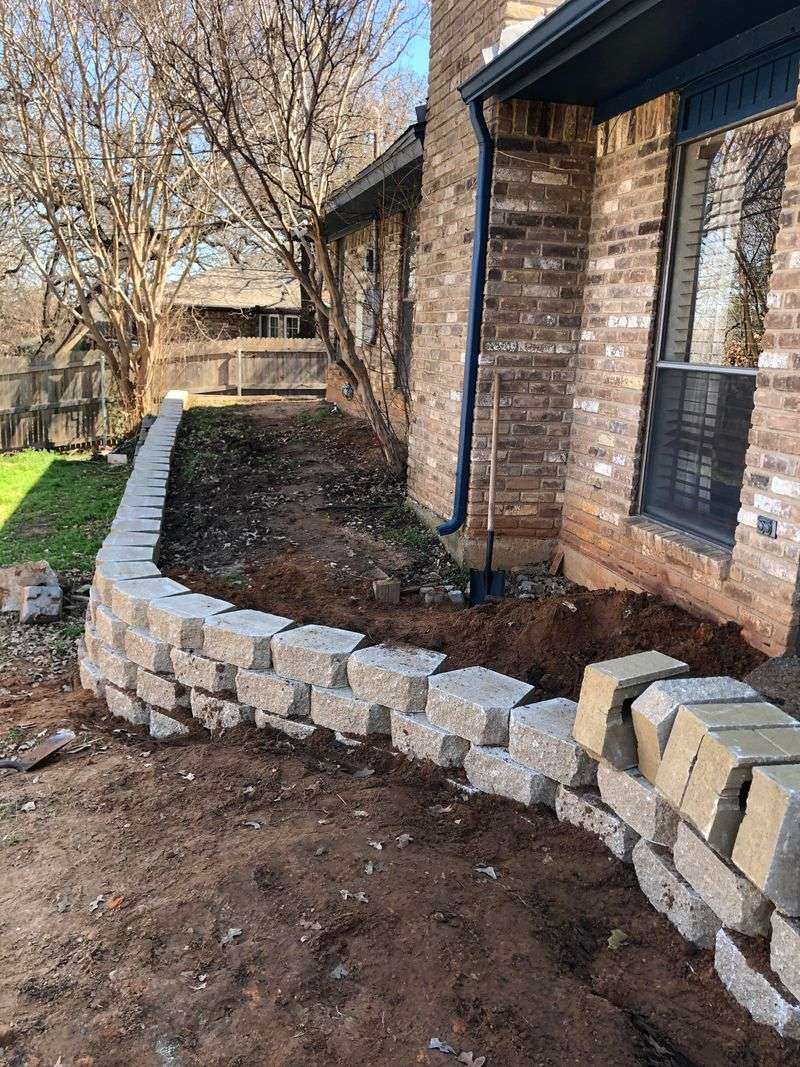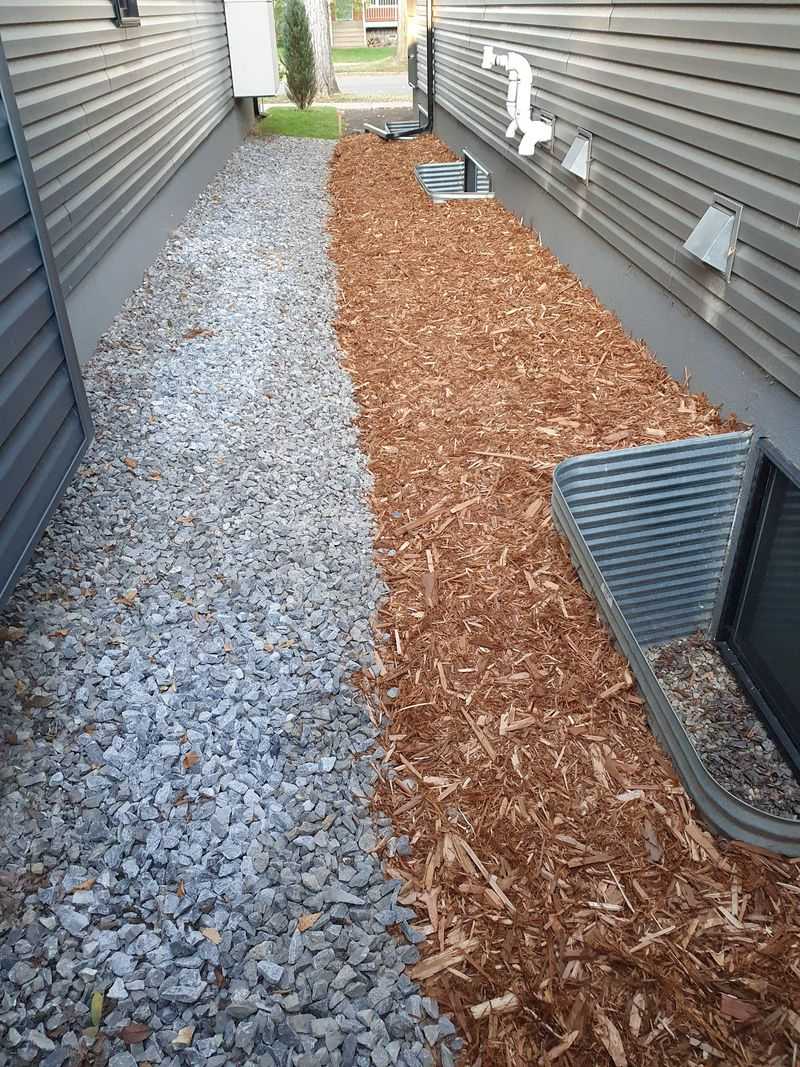Is your garden turning into a swamp every time it rains? It’s a common struggle, but don’t worry, there are simple ways to fix it and keep your plants happy and healthy.
From creating the perfect slopes to using natural materials, there are tons of tricks to save your garden from flooding. Trust me, a little effort can make a huge difference!
Let’s get started on making your garden the beautiful, well-drained paradise it deserves to be!
1. Create a Rain Garden
Instead of fighting against water, work with it by creating a beautiful solution that captures runoff. Rain gardens are slightly depressed areas planted with water-loving native species that absorb excess moisture while adding visual interest to your landscape.
Strategically position your rain garden in low spots where water naturally collects. Select plants with deep root systems like black-eyed Susans, coneflowers, and sedges that drink up moisture and prevent erosion. The soil mixture should be porous yet absorbent.
A well-designed rain garden can handle up to 30% more water than a standard lawn while supporting local wildlife and reducing the need for irrigation during dry spells. It’s problem-solving that actually enhances your garden’s beauty!
2. Install French Drains
Water always finds the path of least resistance, and you can use this principle to your advantage. French drains create an underground highway that redirects excess water away from problem areas, preventing pooling and soggy spots that kill plants.
The concept is brilliantly simple: dig a trench, line it with landscape fabric, add gravel and a perforated pipe, then cover with more gravel. Water seeps in through the holes and flows freely through the pipe to a discharge point away from your garden.
Unlike surface solutions, French drains work invisibly beneath your landscape. They’re particularly effective for chronic wet areas where surface water consistently collects after rain. With proper installation, they can last decades with minimal maintenance.
3. Build Raised Garden Beds
Soggy soil doesn’t have to mean giving up on growing your favorite plants. Raised beds elevate your garden above wet ground, creating perfect growing conditions even in areas prone to flooding or with naturally poor drainage.
The beauty of raised beds is their versatility. Construct them from wood, stone, or recycled materials, making them as tall as needed to escape water problems. Fill with high-quality soil mix that drains well while retaining enough moisture for healthy plant growth.
Beyond solving drainage issues, raised beds offer easier access for gardening, fewer weeds, and soil that warms earlier in spring. They’re perfect for vegetable gardens, flower beds, or creating defined garden rooms in a landscape troubled by water problems.
4. Add Organic Matter to Clay Soil
Heavy clay soil acts like a bathtub, holding water instead of letting it drain away. The fix isn’t complicated, but it does require some muscle and patience as you transform your soil’s structure naturally over time.
Generously mix in organic materials like compost, well-rotted manure, leaf mold, or pine bark. These amendments create air pockets between the tightly packed clay particles, allowing water to filter through rather than pool on top.
Repeat this process annually, working organic matter into the top 8-12 inches of soil. Earthworms and microorganisms will help incorporate these materials deeper, gradually improving drainage throughout your soil profile while adding valuable nutrients that feed your plants.
5. Create Swales and Berms
Reshaping your landscape can elegantly solve water problems without expensive equipment or complicated systems. Swales (shallow ditches) paired with berms (raised mounds) work together to slow water flow, reduce erosion, and direct moisture where you want it.
The gentle depressions of swales catch runoff, while berms prevent water from flowing downhill too quickly. Position these features perpendicular to the natural slope of your land, creating a series of speed bumps for water to navigate.
Unlike harsh drainage solutions, swales and berms blend beautifully into naturalistic landscapes. Plant the berms with drought-tolerant species and the swales with moisture-loving plants. This creates a dynamic landscape that handles both wet and dry conditions with style.
6. Use Permeable Paving
Hard surfaces like concrete patios and solid paving create runoff that can flood nearby garden areas. Switching to permeable alternatives allows water to seep through rather than rush across the surface toward your precious plants.
Options range from simple gravel paths to sophisticated permeable pavers with spaces between them. Even existing patios can be replaced or modified with materials that let water filter through to the soil below, reducing pressure on your garden’s drainage system.
Beyond preventing flooding, permeable surfaces help recharge groundwater and filter pollutants from runoff. They’re cooler in summer than solid surfaces and less likely to develop puddles or dangerous ice patches in winter – practical benefits beyond just solving drainage problems.
7. Aerate Compacted Soil
Years of foot traffic, heavy equipment, or simply the settling of particles can turn soil into a dense mass that repels water instead of absorbing it. Breaking up this compaction creates pathways for water to penetrate deep into the soil profile.
Core aeration removes small plugs of soil, creating channels for water, air, and nutrients. For smaller areas, a garden fork pushed into the ground and gently rocked back and forth works well. In lawns, mechanical aerators make quick work of larger spaces.
Follow aeration with a top dressing of compost to keep the channels open and enrich the soil simultaneously. Regular aeration – once or twice yearly – prevents compaction from returning and maintains healthy drainage patterns throughout your garden.
8. Direct Downspouts Away From Garden
Your roof collects an enormous amount of water during rainstorms, and where that water goes can make or break your garden’s drainage system. A single downspout can discharge gallons of water in minutes – far more than most garden soils can absorb quickly.
Extend downspouts at least 5-10 feet away from your foundation and garden beds using simple plastic extensions or buried drain pipes. Alternatively, direct this water toward rain barrels or areas that can handle the volume without flooding.
For a more elegant solution, create a dry creek bed that carries roof water away while adding visual interest to your landscape. Line it with river rocks of various sizes to slow the flow and prevent erosion while creating a beautiful landscape feature even when dry.
9. Plant Water-Loving Trees
Nature provides some of the most effective drainage solutions in the form of thirsty trees that drink up excess moisture. These botanical pumps can transform problematic wet areas into thriving garden spaces while adding beauty and habitat.
River birch, bald cypress, and willows are champion water drinkers, each capable of absorbing hundreds of gallons daily through their extensive root systems. Black gum and red maple offer stunning fall color while managing wet soils with ease.
Position these natural problem-solvers where they’ll intercept water before it reaches sensitive garden areas. Their roots create channels in the soil that improve drainage over time, while their canopies reduce the amount of rain hitting the ground directly underneath them.
10. Create Dry Creek Beds
Transform drainage problems into landscape features by mimicking nature’s water-handling systems. Dry creek beds manage heavy rainfall while adding year-round visual interest, serving double duty as both practical solution and artistic element.
The design mimics natural waterways with larger stones along the edges and smaller pebbles in the center. Gentle curves look more natural than straight lines and actually help slow water flow. Vary the width to create visual interest and accommodate different water volumes.
When not carrying water, these features provide texture and contrast in the landscape. Plant moisture-loving specimens along the edges to soften the look and further absorb excess water. Native grasses, ferns, and sedges work beautifully in these transitional zones.
11. Install Rain Barrels
Capture the water that would otherwise flood your garden and save it for drier days. Rain barrels collect runoff from roofs, reducing the volume of water hitting your garden during storms while providing free irrigation when you need it most.
Modern systems range from simple plastic barrels to decorative ceramic designs that enhance your garden aesthetic. Position them under downspouts, ideally elevated on stable platforms to increase water pressure and make filling watering cans easier.
A single 55-gallon barrel fills surprisingly quickly during rainfall – just half an inch of rain on a moderate-sized roof can completely fill it. Connect multiple barrels in series to increase capacity, or direct overflow to rain gardens or dry creek beds for a complete water management system.
12. Grade Your Property Properly
Water always flows downhill – a simple fact that forms the foundation of effective drainage solutions. Proper grading ensures water moves away from your home and garden beds rather than pooling where it can damage plants or structures.
The ideal grade drops about 1 inch for every 1-2 feet moving away from buildings and garden beds. This gentle slope is barely noticeable to the eye but makes all the difference in water movement. Identify low spots by observing where water collects after rain.
For minor grading fixes, a shovel, rake, and wheelbarrow of soil often suffice. More extensive regrading might require renting equipment or hiring professionals. The effort pays off in preventing erosion, foundation damage, and soggy gardens that fail to thrive.
13. Use Container Gardening
When ground conditions simply won’t cooperate, take your garden to higher ground. Container gardening bypasses drainage problems entirely while offering flexibility in placement, soil quality, and plant selection.
Choose containers with adequate drainage holes – this is non-negotiable for success. Elevate pots slightly using pot feet or small stones to ensure water exits freely and doesn’t pool underneath. Fill with high-quality potting mix specifically formulated for containers, not garden soil which compacts easily.
Beyond solving drainage issues, containers create gardening opportunities on patios, balconies, and other hardscaped areas. They’re perfect for growing vegetables, herbs, and flowers in precisely controlled conditions, regardless of your native soil’s drainage challenges.
14. Create Strategic Hardscaping
Thoughtfully placed hardscape elements can redirect water while adding structure and function to your garden. Retaining walls, stone pathways, and terracing work together to manage water flow across your property.
Retaining walls transform steep slopes into level planting areas, preventing erosion while creating new gardening spaces. Incorporate drainage pipes behind walls to handle water that would otherwise build up pressure against the structure.
Terracing breaks long slopes into manageable sections, giving water a chance to penetrate soil rather than rushing downhill. Connect these features with properly sloped pathways that direct runoff to appropriate drainage areas. The result is a garden that handles water intelligently while being more accessible and visually interesting.
15. Apply Mulch Strategically
A simple layer of organic material works wonders for drainage problems by preventing soil compaction from heavy rain and creating channels for water to penetrate. Mulch acts as a protective buffer between harsh weather and vulnerable soil.
Apply a 2-3 inch layer around plants, keeping it slightly away from stems and trunks. Coarser materials like pine bark chunks or wood chips work best in wet areas, as they’re less likely to mat down and block water penetration than fine mulches.
Beyond improving drainage, mulch moderates soil temperature, suppresses weeds, and gradually breaks down to add organic matter to the soil. It’s a simple solution that improves garden health while making maintenance easier and enhancing the overall appearance of your planting beds.

